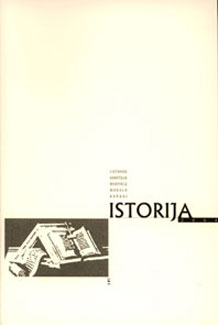Pamarių kultūros bendruomenių ūkininkavimo ypatumai
Farming Peculiarities in the Pamariai (the Baltic Coastal) Culture Society
Author(s): Algirdas GirininkasSubject(s): Archaeology
Published by: Vytauto Didžiojo Universitetas
Keywords: Archaeology; culture of Pamariai; late Neolithic age; economics; artefacts; natural conditions
Summary/Abstract: The article deals with the farming peculiarities in the Baltic Coastal culture society. According to the latest archaeological research data, the Pamariai (the Baltic Coastal) culture formed in the second half of the middle Neolithic; its formation and development were strongly predetermined by the following cultures: the Funnel Beaker culture, the Globular Amphora culture, the Corded Ware culture, and some others. The Baltic Coastal culture can be traced back to 3350–2000 BC in time and to a narrow Baltic seaside southeastern region in place. Hunting, fishing as well as amber picking were the basis for the economic development in the early Baltic Coastal culture. In the later period of the development of the Baltic Coastal culture its influence on the neighbouring communities (especially the Narva culture) expanded. The inhabitants of the Baltic Coastal culture started grain growing and cattle breeding in addition to amber trade. Thus, the Baltic Coastal culture in the late Neolithic became a mediator between the Neolithic communities, such as the Globular Amphora culture (an agrarian economy) and the Narva and Comb-Market Pottery cultures (a forest economy).
Journal: Istorija. Lietuvos aukštųjų mokyklų mokslo darbai
- Issue Year: 61/2004
- Issue No: 3
- Page Range: 3-9
- Page Count: 7
- Language: Lithuanian

